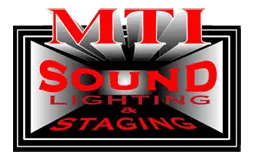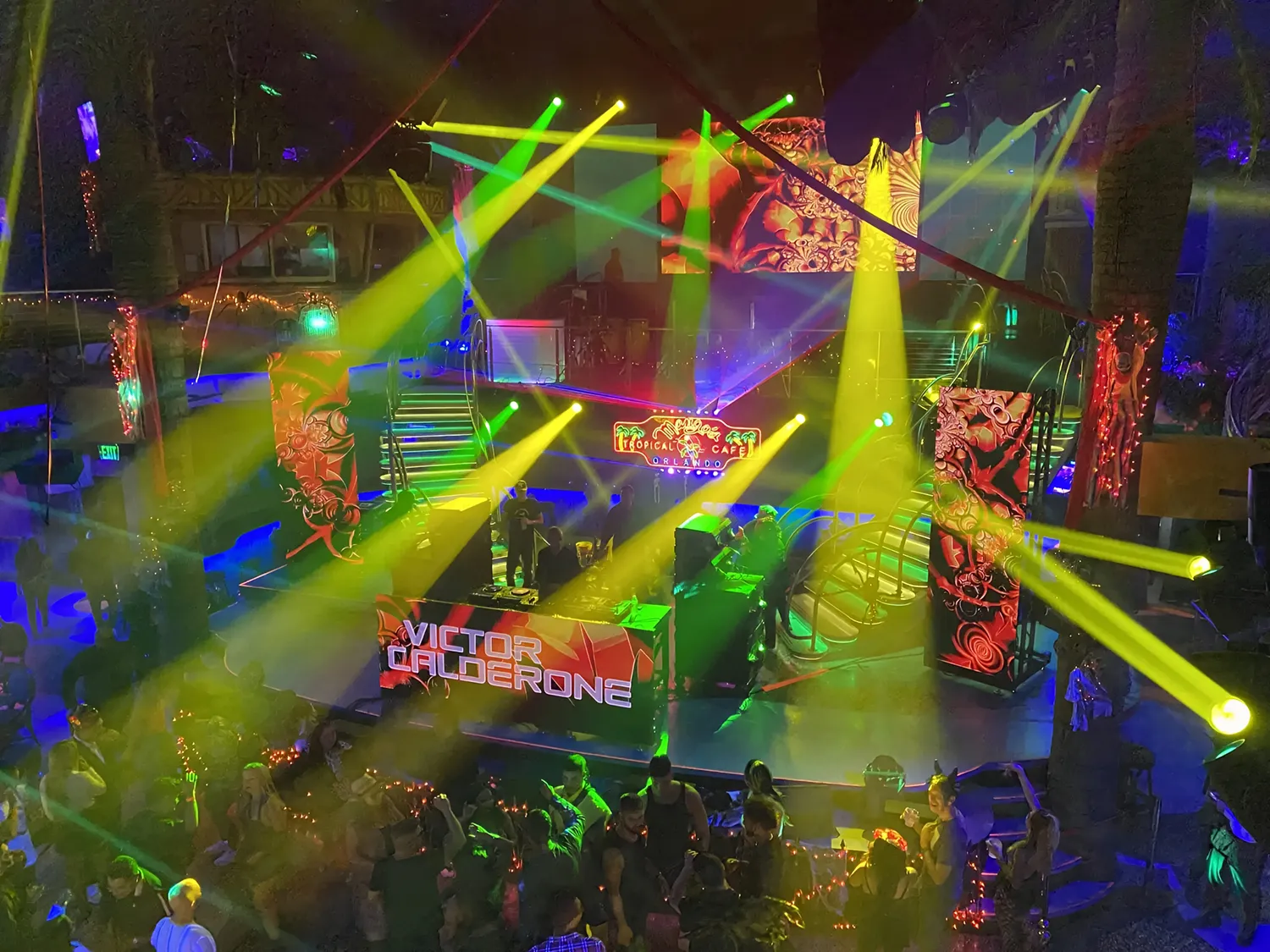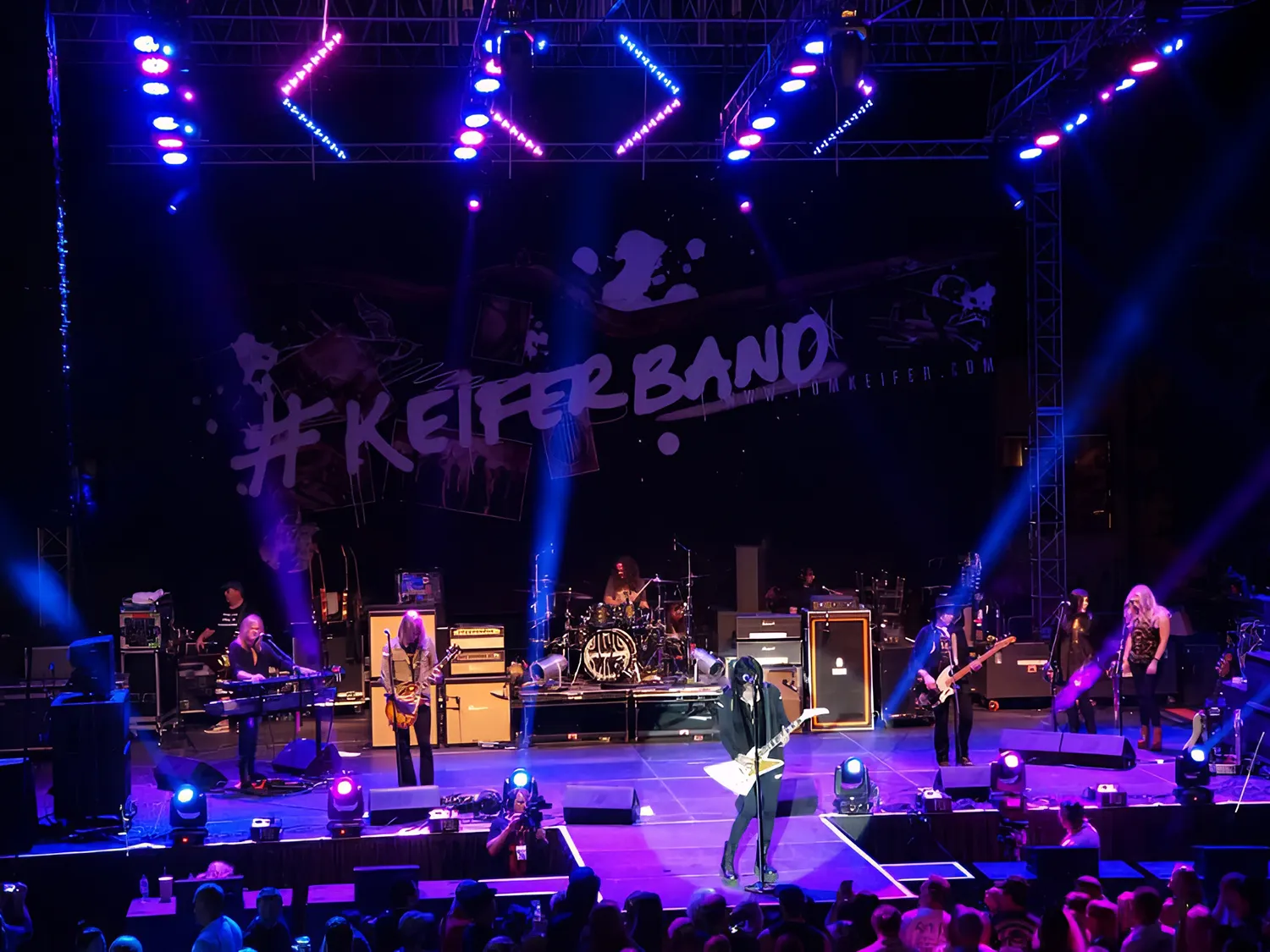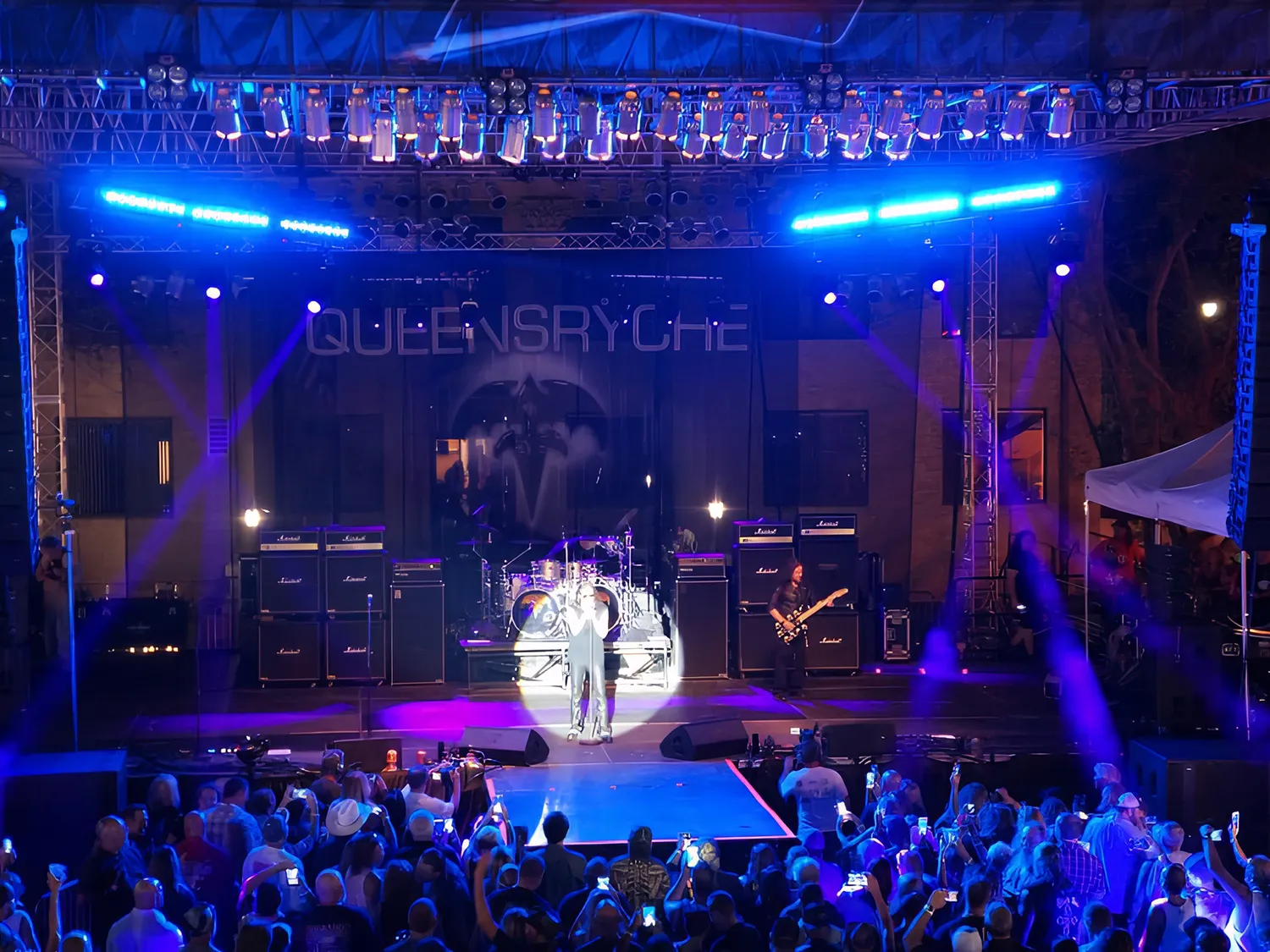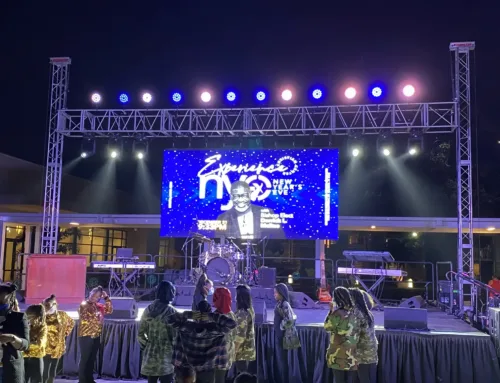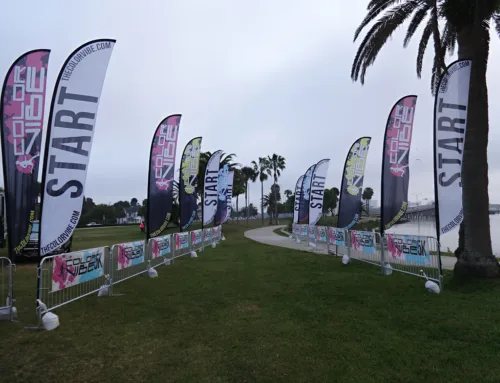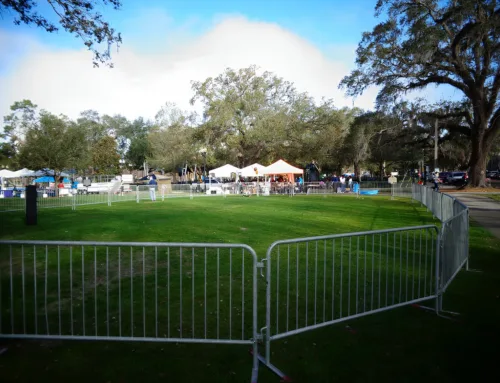Event lighting can make or break the mood of any gathering and with new technologies reshaping the scene for 2025 it is getting harder to keep up. Most people think a few floodlights or colored bulbs will do the trick but that barely scratches the surface. The truth is that LED lights are now so efficient they use up to 75 percent less energy than traditional options and can transform any space into an unforgettable experience when used right.
Table of Contents
- Key Types Of Event Lighting Explained
- Choosing The Right Lighting For Your Venue
- Trends In Event Lighting For 2025
- Practical Tips For Perfect Event Lighting
Quick Summary
| Takeaway | Explanation |
|---|---|
| Understanding Lighting Types is Essential | Familiarize yourself with foundational lighting techniques like wash and spot lighting to create impactful experiences that set the mood and guide audience attention. |
| Tailor Lighting to Venue Characteristics | Always assess the venue’s attributes including layout and existing light sources to inform strategic lighting design that enhances the overall atmosphere. |
| Embrace Technological Innovations | Utilize advanced lighting technologies such as intelligent systems and LED solutions for dynamic, immersive environments that can adapt to the event’s energy and flow. |
| Prioritize Energy Efficiency and Safety | Incorporate energy-efficient lighting solutions and ensure functional safety measures are met, providing both visual appeal and practicality throughout the event. |
Key Types of Event Lighting Explained
Understanding the various types of event lighting is crucial for creating memorable and impactful experiences. Lighting does more than simply illuminate a space it sets the mood, guides attention, and transforms ordinary environments into extraordinary settings.
Foundational Lighting Techniques
Event lighting encompasses several core techniques that professionals use to craft visual experiences. The United States Institute of Theatre Technology (USITT) identifies four primary categories of event lighting that serve distinct purposes in creating atmosphere and functionality.
Wash Lighting provides broad, even illumination across large areas. These lights create a base layer of visibility and can dramatically change the color and mood of a space. Event designers often use wash lights to set an overall tone for corporate conferences, wedding receptions, or concert stages. By selecting specific color temperatures and hues, wash lighting can transform a neutral venue into a vibrant or elegant environment.
Spot Lighting represents a more focused approach. These precision lights draw attention to specific elements like speakers, performers, or key decor features. In a corporate event, spot lighting might highlight a presenter on stage. During a wedding, it could create a dramatic effect around the couple during their first dance. The directional nature of spot lights allows event designers to create visual hierarchy and guide audience focus.
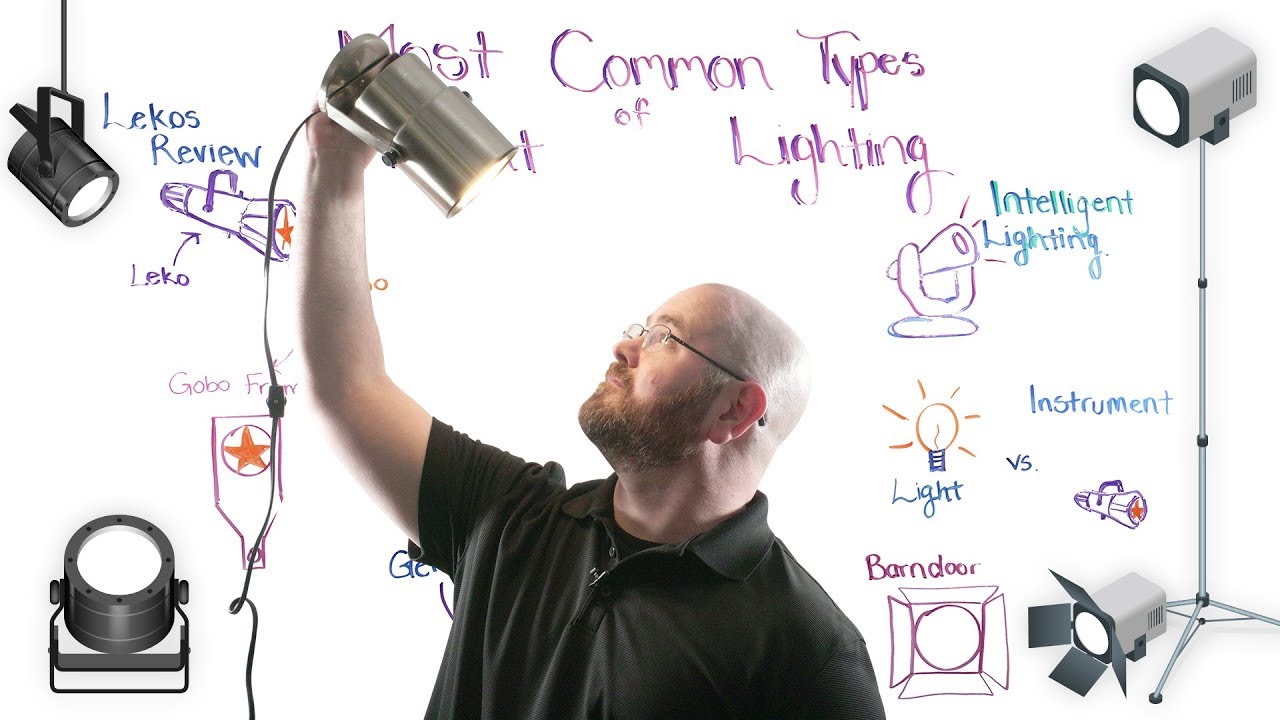
Advanced Lighting Technologies
Modern event lighting has evolved beyond traditional techniques. Intelligent Lighting Systems represent a technological breakthrough in event production. These automated lights can move, change colors, and create dynamic visual effects in real time. According to event production experts, intelligent lighting allows for unprecedented creative flexibility.
Intelligent lights can programmatically shift colors, adjust beam angles, and synchronize with music or other performance elements. This technology is particularly popular in concerts, nightclub environments, and large-scale corporate events where visual dynamism is key. The ability to create complex, responsive lighting sequences transforms events from static experiences into immersive visual journeys.
LED Lighting Revolution
LED technology has fundamentally transformed event lighting capabilities. Unlike traditional lighting sources, LED lights offer remarkable energy efficiency, color range, and operational flexibility. Event designers can now create intricate color palettes and lighting designs that were previously impossible.
LED lighting solutions provide several advantages: low heat emission, long operational life, and the ability to produce virtually any color without using traditional color filters. For event planners, this means more creative freedom and lower production costs. Whether illuminating a corporate conference stage or creating an intimate wedding atmosphere, read more about our event lighting rental options that leverage cutting edge LED technologies.
Understanding these lighting types empowers event professionals to craft experiences that are not just visually stunning, but emotionally resonant. Each lighting technique offers unique possibilities for transforming spaces and creating memorable moments.
To help you compare the key foundational and advanced lighting techniques discussed above, here’s a table summarizing their purposes and best-use scenarios:
| Lighting Type | Purpose | Best-Use Scenario |
|---|---|---|
| Wash Lighting | Broad, even illumination, sets base mood | Corporate conferences, concerts, weddings |
| Spot Lighting | Focuses attention on specific elements | Presenters, key decor, first dances |
| Intelligent Lighting | Dynamic movement, color changes, effects | Concerts, nightclubs, large-scale events |
| LED Lighting | Energy efficiency, color flexibility | Any event needing creative or sustainable lighting |
Choosing the Right Lighting for Your Venue
Selecting the appropriate lighting for an event venue requires strategic planning and a nuanced understanding of how different lighting techniques impact audience perception and experience. The right lighting can transform a space, elevate mood, and create memorable atmospheric moments.
Analyzing Venue Characteristics
Before designing a lighting plan, event professionals must thoroughly assess venue-specific attributes. Lighting design experts recommend evaluating critical factors such as architectural layout, existing light sources, ceiling height, and room dimensions. These elements significantly influence lighting strategy.
Architectural considerations play a pivotal role in lighting selection. High ceilings might require different mounting techniques compared to compact spaces. Natural light sources like windows can either complement or compete with artificial lighting, necessitating adaptive approaches. Ceiling structural integrity also determines potential rigging points for lighting equipment.
Matching Lighting to Event Purpose
Event technology professionals emphasize that lighting must align precisely with an event’s specific objectives. Corporate conferences demand different lighting approaches compared to wedding receptions or music performances.
For corporate events, lighting should facilitate clear visibility, create professional atmospheres, and highlight presentation areas. Soft, even illumination helps maintain audience focus and communicates a sense of professionalism. Conversely, entertainment venues require dynamic, color-rich lighting that can change rapidly and create immersive experiences.
Strategic Lighting Design Techniques
Effective lighting design involves understanding multiple lighting categories and their strategic applications. Precon Events guides outline key lighting types: ambient, task, accent, decorative, and spotlighting. Each serves a unique purpose in creating comprehensive visual experiences.
Ambient lighting provides overall illumination, establishing a foundational environment. Task lighting focuses on specific functional areas like registration desks or buffet stations. Accent lighting draws attention to particular elements such as centerpieces or architectural features. Decorative lighting introduces artistic and emotional dimensions, while spotlighting creates dramatic focal points.
Color temperature and intensity play crucial roles in setting emotional tones. Warm lighting generates intimacy and comfort, while cooler tones communicate professionalism and alertness. Intelligent lighting systems allow precise color manipulation, enabling rapid mood transitions.
Explore our comprehensive event lighting rental solutions to discover how professional lighting design can transform your next event. Understanding these nuanced lighting strategies empowers event planners to create immersive, memorable experiences that resonate with audiences and achieve specific event objectives.
Trends in Event Lighting for 2025
The event lighting landscape is rapidly evolving, driven by technological innovations and changing audience expectations. As we move into 2025, emerging trends are reshaping how event professionals approach lighting design, creating more immersive, interactive, and meaningful experiences.
Immersive LED Technologies
Cutting-edge event design experts are pioneering immersive LED installations that transform event spaces into dynamic, responsive environments. These advanced systems go beyond traditional illumination, creating interactive visual landscapes that adapt in real-time to audience movements, music, and event dynamics.
Immersive LED technologies enable unprecedented creative expression. Imagine conference stages that visually pulse with presenter energy, or wedding receptions where lighting responds to dance floor activity. These installations use sophisticated sensor technologies and programmable LED arrays to create living, breathing visual experiences that engage attendees on a deeper emotional level.
Smart Lighting and Automation
Technological innovators are revolutionizing event lighting through advanced automation and smart control systems. These technologies allow for unprecedented precision in lighting management, enabling instantaneous mood shifts and programmatic lighting sequences that align perfectly with event narratives.
Smart lighting systems can now integrate with event management software, creating synchronized experiences across multiple platforms. Event planners can preset complex lighting scenarios, allowing seamless transitions between different event phases. For corporate conferences, this might mean dynamically adjusting lighting to maintain audience engagement during presentations. In concert settings, it translates to breathtaking visual symphonies that complement musical performances.
Human-Centric Lighting Approaches
Emerging research in lighting design highlights a profound shift towards human-centric lighting (HCL) solutions. This approach prioritizes human physiological and psychological well-being, using tunable white LED systems that can adjust color temperature and brightness to support human circadian rhythms and emotional states.
In practice, this means event lighting that does more than illuminate. HCL technologies can create environments that reduce stress, enhance focus, and promote positive emotional experiences. For extended conferences or multi-day events, lighting can be programmed to support attendee energy levels, increasing productivity during day sessions and promoting relaxation during networking periods.
Discover how our advanced event lighting services can transform your next event with these cutting-edge technologies. The future of event lighting is not just about visibility it is about creating holistic, responsive experiences that connect deeply with human perception and emotion.
As we move further into 2025, these trends demonstrate that event lighting is becoming an increasingly sophisticated art form. No longer just a technical requirement, lighting is emerging as a critical storytelling medium that can profoundly shape audience experiences.
To clarify the 2025 event lighting trends discussed, here is a summary table outlining key features and benefits of each trend:
| Trend | Key Features | Main Benefits |
|---|---|---|
| Immersive LED Technologies | Interactive, responds to movement/music, LED arrays | Deep engagement, adaptive experiences |
| Smart Lighting & Automation | Automated programming, event software integration | Seamless transitions, precise mood/phase control |
| Human-Centric Lighting (HCL) | Tunable white LEDs, supports circadian rhythms & emotions | Enhances well-being, boosts focus, reduces stress |
Practical Tips for Perfect Event Lighting
Creating perfect event lighting requires more than technical knowledge it demands strategic planning, creative vision, and meticulous attention to detail. Professional event designers understand that lighting is a complex art form that can dramatically transform spaces and audience experiences.
Strategic Planning and Room Assessment
Special Events magazine recommends a comprehensive nine-step approach to event lighting design. The first critical step involves thorough venue assessment and strategic planning. Event professionals must carefully examine room dimensions, architectural features, existing light sources, and potential mounting locations for lighting equipment.
Room layout plays a crucial role in lighting design. Understanding the event’s flow and key focal points allows designers to create strategic lighting zones. For instance, presentation areas require different illumination compared to networking spaces. Consideration of natural light sources, window placements, and potential glare becomes essential in creating balanced lighting environments.
Energy Efficiency and Technical Considerations
The U.S. Department of Energy emphasizes the importance of energy-efficient lighting solutions. Modern event lighting design goes beyond aesthetic considerations, incorporating smart technologies that reduce energy consumption while maintaining exceptional visual quality. LED fixtures with programmable controls offer unprecedented flexibility and sustainability.
Technical considerations extend beyond basic illumination. Lighting designers must account for power requirements, cable management, heat generation, and equipment compatibility. Proper electrical planning prevents potential technical disruptions and ensures smooth event execution. Professional-grade dimming systems and programmable LED arrays allow for seamless transitions between different event phases.
Safety and Functional Lighting Design
Event safety experts highlight the critical importance of balancing aesthetic lighting with functional safety requirements. Proper illumination of emergency exits, pathways, and potential hazard areas is not just a recommended practice it is often a legal requirement for event venues.
Functional lighting design involves creating multiple layers of illumination. Ambient lighting provides overall visibility, task lighting supports specific functional areas, and accent lighting draws attention to key elements. The goal is to create a comprehensive lighting environment that is both visually appealing and practically supportive of the event’s objectives.
Explore our comprehensive event lighting consultation services to transform your next event with professional lighting expertise. By combining technical precision, creative vision, and strategic planning, event professionals can create lighting experiences that are not just visually stunning but also functionally exceptional.
Remember that perfect event lighting is about creating an immersive environment that supports the event’s goals, enhances audience experience, and tells a compelling visual story. Every lighting decision should be intentional, strategic, and aligned with the broader event narrative.
Frequently Asked Questions
What are the key types of event lighting?
Event lighting can be categorized into foundational techniques such as wash lighting for general illumination and spot lighting for emphasizing specific elements. Additionally, advanced technologies like intelligent lighting systems and LED lighting play significant roles in modern event design.
How can I choose the right lighting for my event venue?
Selecting the appropriate lighting involves analyzing the venue’s characteristics, such as layout, existing light sources, and room dimensions. Consider the event’s purpose to match the lighting design with the desired atmosphere.
What are the latest trends in event lighting for 2025?
Key trends for 2025 include immersive LED technologies that create dynamic environments, smart lighting systems for precise control, and human-centric lighting approaches that enhance well-being by adjusting to attendees’ needs.
What practical tips can improve event lighting design?
To enhance event lighting, conduct a thorough room assessment for strategic planning, prioritize energy efficiency through smart technologies, and ensure safety by properly illuminating emergency exits and pathways.
Take Your 2025 Event Lighting From Ordinary to Extraordinary
You have just explored the latest event lighting essentials for 2025 and learned that modern events demand much more than basic illumination. Challenges like outdated technology, uneven lighting, and lack of atmosphere can leave your event feeling flat and uninspired. Incorporating cutting-edge techniques such as intelligent and LED lighting is no longer optional if you want to deliver a truly memorable experience. Now is the moment to take your lighting strategy to the next level with professionals who understand the impact of every detail.
Experience the difference that over 30 years of expertise makes with our Event Lighting Services. Whether you need custom design, advanced rentals, or a full technical production team, MTI Sound will elevate your experience for corporate, concert, or private events anywhere in Florida or the Southeast. Visit https://mtisound.com to get your custom quote and secure the transformative solutions your event deserves. Do not miss out on the trends shaping 2025—turn your vision into a reality today.
Recommended
- Event Lighting Services Archives – MTI Sound
- Event Lighting Rental Archives – MTI Sound
- Audio Visual Services Archives – MTI Sound
- Event Lighting Rental: A Game-Changer
- How Entrepreneurs Can Use Colored Lights to Stay Productive – kolorguide
- Decoración bodas originales 2025: ideas únicas y arte personalizado – Live Wedding Painters
Related Articles
Request A Quote
Need to get ahold of us? Then give us a call at (407) 330-0906, email us or use the contact form.
